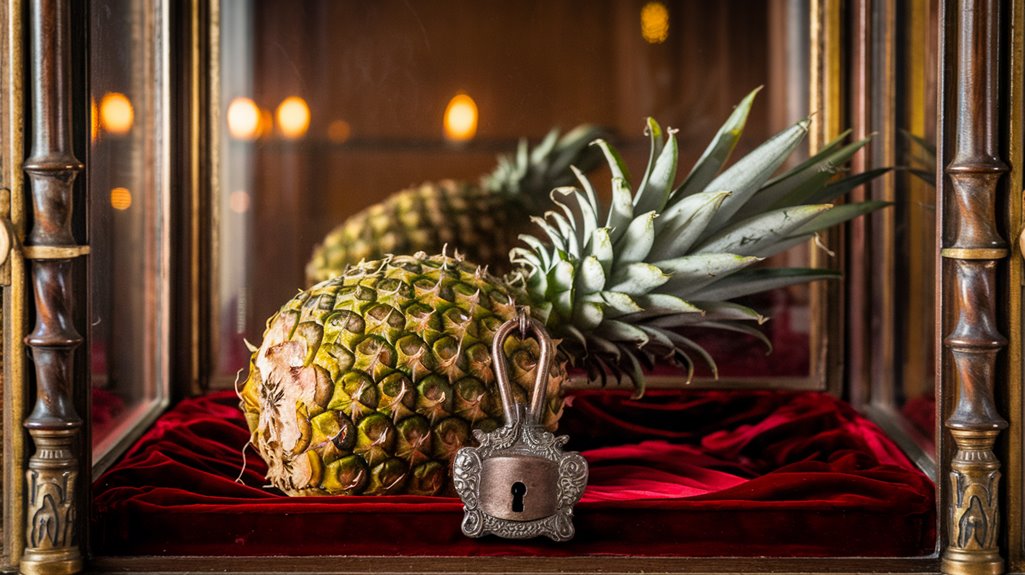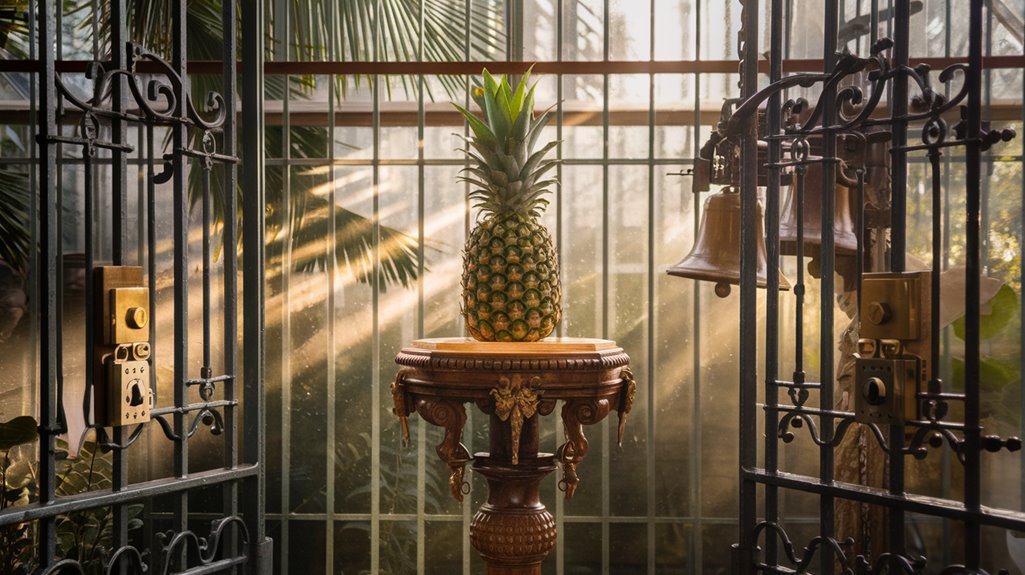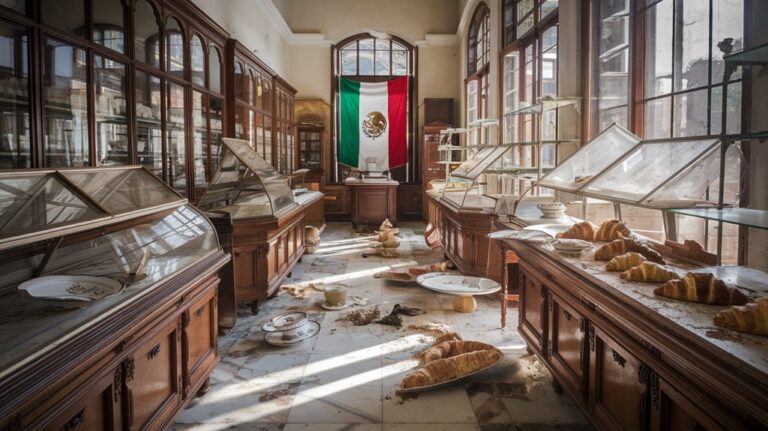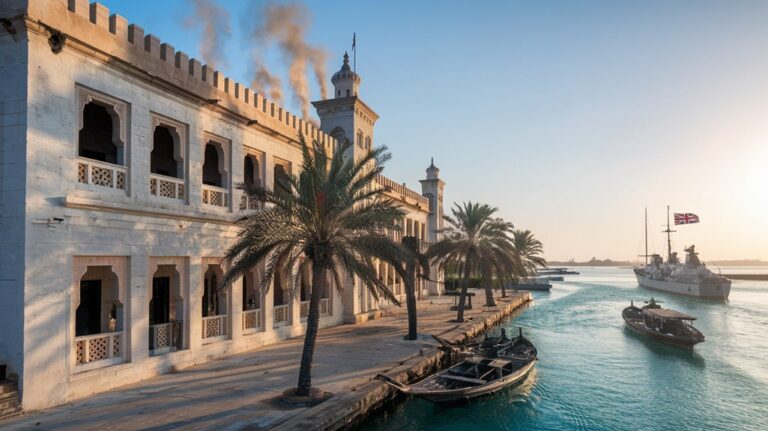Stealing Pineapples Was Once a Major Offense
In 1807, you'd need to spend the equivalent of $8,000 in today's money to purchase a single pineapple in London. This exotic fruit commanded such astronomical prices that thieves faced severe punishment for stealing even one specimen, with prison sentences rivaling those given for violent crimes. While it might seem absurd now to serve years behind bars for snatching a pineapple, the fascinating social dynamics and status-driven culture of Colonial Europe explain these harsh consequences.
The Rise of Pineapples as a Status Symbol
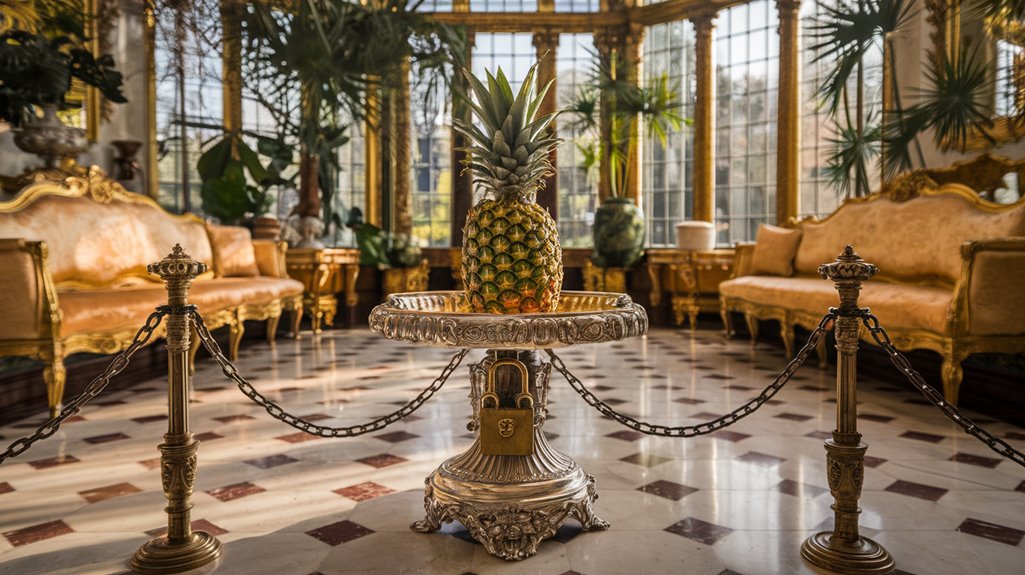
While pineapples now fill grocery store shelves worldwide, these tropical fruits were once worth thousands in today's dollars and served as powerful status symbols in European society.
After Columbus brought them back from the Caribbean in 1493, you'd find these exotic fruits adorning the most prestigious royal banquets across Europe. European nobles often presented as gifts to demonstrate their wealth and status.
You might be surprised to learn that a single pineapple could cost up to $8,000 in today's money. The fruit's rarity and unique taste made it the ultimate symbol of wealth and hospitality among the elite. The Tupinamba people were the first to recognize the fruit's value, using it to create wine and medicines.
Pineapple symbolism became so significant that if you couldn't afford to buy one, you could rent it as a centerpiece for your dinner party. The wealthy would showcase these prized possessions at their feasts, making it clear to guests that no expense had been spared for their entertainment.
The Extraordinary Value of Colonial Pineapples
Pineapples in colonial America represented more than just an exotic fruit – they were fundamentally worth their weight in gold.
You'd need to shell out what would amount to $8,000 in today's currency to get your hands on one of these prized Caribbean imports. Their astronomical value stemmed from the extreme difficulty in transporting them before spoilage and their limited availability.
As pineapple cultivation was virtually impossible in America's climate, only the wealthiest could afford these treasures. Some affluent colonists would rent their pineapples to others seeking to impress guests at social gatherings.
The Dutch eventually revolutionized the market by developing specialized hothouses, but until then, most pineapples rotted during their Atlantic journey. Agnes Block made history when she grew the first pineapple in Europe using these innovative hothouses.
This scarcity only heightened their appeal among the elite, who viewed them as the ultimate symbol of prosperity and hospitality.
Notable Cases of Pineapple Theft and Punishment
The extraordinary value of colonial pineapples led to an equally remarkable history of theft and punishment.
You'll find that historical punishments for pineapple theft were surprisingly severe, as evidenced by John Godding's 1807 sentence of seven years in an Australian penal colony for stealing just seven pineapples. These fruits were so valuable that they were worth £60 to £80 in the 1770s.
The theft consequences have evolved but remain harsh in modern times, particularly in Kenya. Local villagers continue to steal pineapples due to extreme poverty in areas surrounding the plantations.
At Del Monte's plantation, attempted pineapple theft has resulted in violent confrontations and severe penalties.
In 2008, three men faced death sentences for attempting to steal 30 pineapples.
While colonial Britain focused on deportation and imprisonment, today's cases in Kenya reflect deeper systemic issues, with over 1,860 documented human rights abuses involving plantation guards, including allegations of torture and murder.
Security Measures to Protect Precious Fruit
Since protecting valuable fruit crops demands substantial investment, modern plantations employ sophisticated security systems ranging from infrared cameras to armed patrols.
You'll find that fruit security has evolved considerably, with farms implementing extensive theft prevention strategies to safeguard their precious harvests. Similar to how the theft prevention landscape has evolved, implementing fair use protections requires complex considerations in today's digital world.
Today's agricultural facilities combine traditional methods with cutting-edge technology to protect their investments. Similar to how network traffic monitoring helps detect cyber threats, these security measures allow farms to identify and respond to potential theft attempts.
- Motion-activated surveillance systems monitoring orchards 24/7
- Perimeter fencing equipped with vibration sensors and alarm systems
- Security personnel conducting regular patrols during harvest seasons
- GPS tracking devices embedded in shipping containers and vehicles
- Advanced access control systems restricting entry to authorized personnel only
These measures help protect against both opportunistic thieves and organized crime rings targeting high-value fruit crops.
The investment in security often pays for itself by preventing losses and maintaining the farm's reputation for reliable production.
The Pineapple Rental Economy
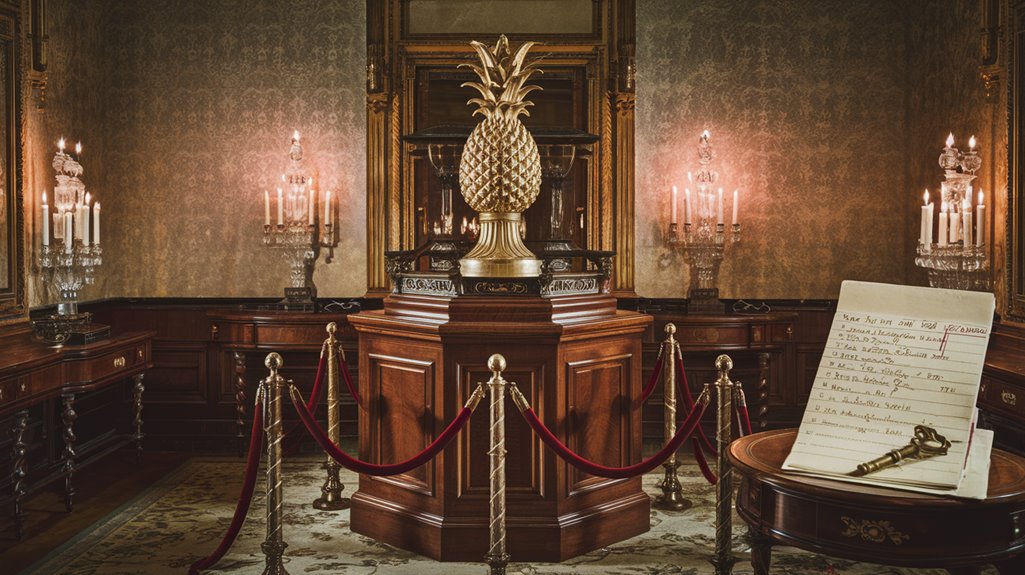
During the height of European aristocratic society, an unusual luxury rental market emerged that centered around a single tropical fruit.
If you couldn't afford to buy a pineapple, which could cost the equivalent of NZ$13,000 to NZ$23,000 in today's money, you could rent one for your dinner party.
These pineapple displays became the ultimate status symbol, allowing middle-class social climbers to imitate the wealthy.
The expensive fruit required specialized heated hothouses to grow in Europe's non-tropical climate.
Rental prices were far more affordable than purchasing the fruit outright, and the same pineapple would circulate through multiple events until it spoiled.
You wouldn't eat your rented pineapple – it was purely for show.
The practice became so widespread that it was even satirized in literature as a symbol of excessive luxury and social pretension.
Modern researchers have uncovered numerous primary source accounts from dinner party guests describing these rental pineapples.
 Agnes Block in Belgium achieved the first cultivation in 1685. The high value of these fruits led to extreme security measures, with some wealthy owners employing dedicated guards to protect them.
Agnes Block in Belgium achieved the first cultivation in 1685. The high value of these fruits led to extreme security measures, with some wealthy owners employing dedicated guards to protect them.
- Only royalty and the elite could afford to eat these precious fruits.
- Middle-class families would rent pineapples to appear wealthy at social gatherings.
- Pineapple motifs adorned luxury items, from plates to architectural features.
- A single pineapple could cost £60 (about £11,000 today).
- Social events weren't considered complete without a pineapple centerpiece.
The fruit's influence on social hierarchy was so profound that it became a universal symbol of wealth and sophistication, shaping how people displayed their status in European society.

